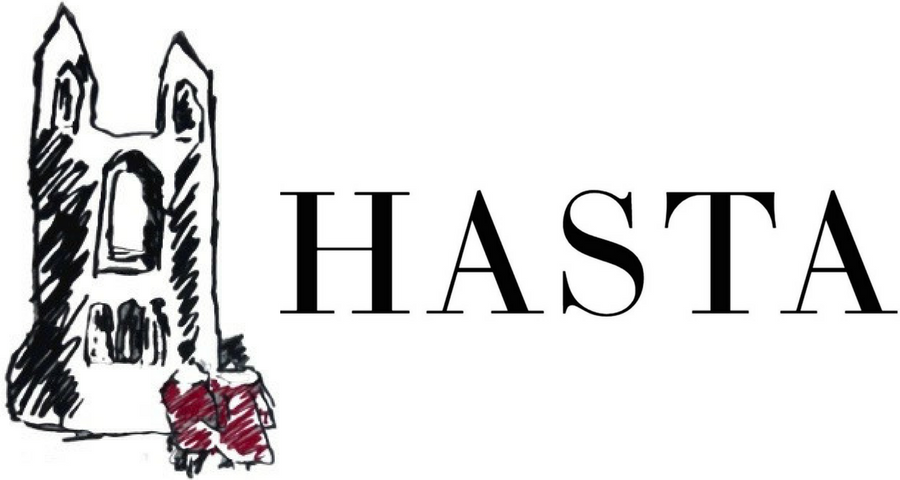The People's Curator: Elspeth King and the Democratisation of Scottish Museology
By Emma Montague
Elspeth King (1949-2025) was a significant - and often underacknowledged - figure in Scottish cultural history. As a curator, social historian, and writer, she reshaped the idea of what museum spaces and collections could be and how they could represent the lives of ordinary working-class people. Born into a mining family in Lochore, Fife, King’s visits to Edinburgh’s National Museum of Scotland sparked her lifelong passion for these spaces. By the age of six, she had decided she wanted to work in museums, later studying Medieval History at the University of St Andrews before completing postgraduate studies in Museum Studies at the University of Leicester.
Elspeth King, circa 1970s, photographer unknown.
Image courtesy of The Courier, 2025.
Through her work at the People’s Palace Museum in Glasgow from 1974 to 1990, King redefined Scottish museology as an act of inclusion and as a space worthy of its original intention. During her time here, she helped to secure the museum’s reputation as a national leader in social history, winning the European Museum of the Year Award in 1981 and the British Museum of the Year Award in 1983 under her curatorship. King’s perspective on curation was rooted in the idea that museums should reflect the lives of the people they serve, and her approach at the People’s Palace embodied this view. She brought to attention the material culture of working-class life, from everyday domestic objects to trade union banners, civic artefacts, and items of popular culture. She believed these objects carried stories of creativity and resilience equal to any fine art collection.
Edmund Smith, Billy Connolly’s Banana Boots, on display at the People’s Palace, Glasgow, 1975.
Image courtesy of Glasgow Life, 2025.
King’s curatorship also introduced a unique sense of wit and populism into Scottish museum culture. Her decision to exhibit Glasgow comedian Billy Connolly’s iconic “banana boots”, designed in 1975 by Edmund Smith, challenged traditional ideas of what was considered museum-worthy, stirring controversy among traditionalists while captivating public humour and curiosity. In 1977, she also commissioned the then lesser-known writer and artist Alasdair Gray as the museum’s first “artist-recorder” to create paintings that captured the people and places of Glasgow, addressing gaps in the museum’s art collection. Through such actions, King revealed how art and history could coexist on equal terms, transforming the museum into a living archive of the city.
Alasdair Gray, End of Arcadia Street (three), 1977, acrylic & ink on paper, Glasgow Museums Resource Centre (GMRC).
Image courtesy of Art UK, 2025.
However, her radicalism came at a price. In 1990, despite her years of service and success with the People’s Palace, she was controversially overlooked for the newly created post of Keeper of Social History at Glasgow Museums, a decision widely criticised in the Scottish press and later dubbed the “Elspeth King affair”. Disillusioned, she left Glasgow and became director of the Dunfermline Heritage Trust, where she oversaw the restoration of Abbot House, a historic building and multi-purpose community space. She was then appointed Director of the Stirling Smith Art Gallery and Museum in 1994, a post she held until her retirement in 2018. There, she continued her philosophy of “curating from below,” ensuring that the museum remained rooted in cultural democracy. In recognition of her decades of public service, she was awarded an honorary doctorate by the University of Stirling in 2005.
King’s work predicted many of the guides now central to inclusive and decolonial museology: community involvement, feminist reinterpretation, and social storytelling. Her curatorial legacy echoes in the ethos of many of today’s Scottish museums, from The Burrell Collection’s community collaborations to the pioneering work of the Glasgow Women’s Library. Both archives embody King’s insistence that art and history belong to everyone, not just to those with cultural or financial capital.
Elspeth King’s achievements go beyond her writings and awards. In championing the everyday, her enduring contribution was to redefine the museum as a democratic space - one that reflects the experiences of working people, women, and communities - finally enabling them to recognise themselves within the nation’s heritage. In the ongoing dialogue between culture and class, her vision endures as a reminder that the true purpose of the museum is not merely to preserve objects, but to highlight and display the people who live, shape, and carry forward history.
Bibliography
Alexander, Michael. “Tributes Paid to Fife-Born Miner’s Daughter Who Became “Pioneering” Stirling Museum Leader.” The Courier. November 5, 2025. https://www.thecourier.co.uk/fp/obituaries/5365306/elspeth-king-stirling-dunfermline-museum-legacy/
Art UK. Review of End of Arcadia Street (Three). Accessed 11th November 2025. https://artuk.org/discover/artworks/end-of-arcadia-street-84279
BBC. “Good Morning Scotland - Long Interview: Dr Elspeth King - BBC Sounds.” 2018. https://www.bbc.co.uk/sounds/play/p06g5m8g
King, Elspeth. The People’s Palace and Glasgow Green. Mainstream Publishing, 1996.
Glasgow Life. “People’s Palace Most Popular Objects.” 2025. https://www.glasgowlife.org.uk/museums/venues/peoples-palace/top-ten-must-see
O’Neill, Christina. “How a Barras ‘Midden-Raker’ Transformed the People’s Palace.” STV News. December 28, 2022. https://news.stv.tv/west-central/peoples-palace-curator-elspeth-king-on-becoming-the-glasgow-midden-raker
Riach, Alan. “Elspeth King Was Dedicated to Scotland’s Working-Class History.” The National. November 10, 2025. https://www.thenational.scot/community/subscriber/25608063.elspeth-king-dedicated-scotlands-working-class-history/



